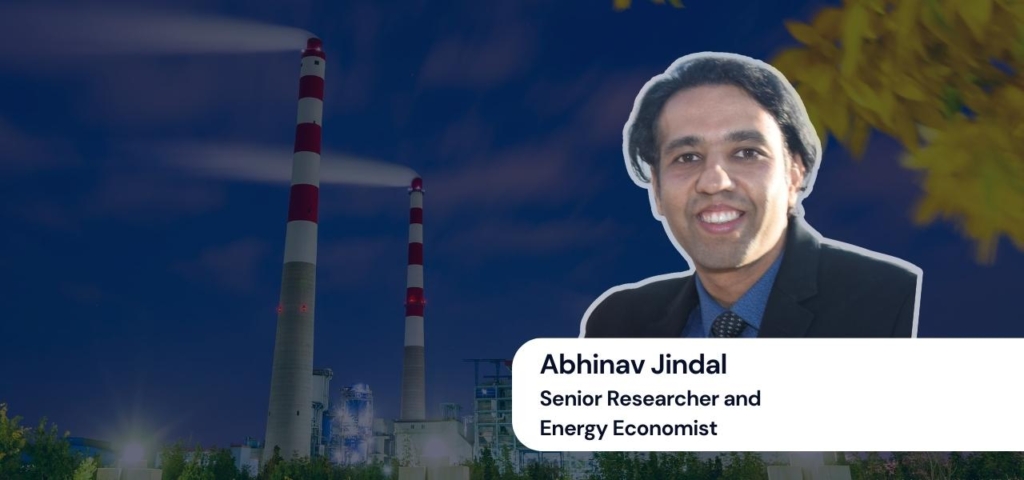The path to a sustainable energy future is filled with challenges and opportunities, and India is no exception to this global endeavor. In a recent interview, Abhinav Jindal, Senior Researcher and Energy Economist, an expert in the energy sector, shared his insights on various aspects of India’s energy transition. From the role of state-owned enterprises to the prospects of green hydrogen, Jindal provides a comprehensive perspective on the complexities and possibilities within India’s evolving energy landscape.

Diverse Energy Sources
The conversation kicks off with a pertinent question: Is it imperative to shut down coal power plants in the quest for sustainability, or is there a way to balance coal use with mitigation efforts? Jindal highlights the unique dynamics of India’s energy transition, where coal power still plays a significant role in meeting the country’s growing energy demand. He emphasizes that coal plants that become economically unviable will naturally phase out due to market mechanisms, but the challenge lies in ensuring a smooth transition that doesn’t harm the economy or jeopardize the finances of state-owned banks.
Repurposing Coal Plants
One of the intriguing concepts discussed is the repurposing of coal plants. Jindal explains that repurposing involves utilizing an existing asset for a different productive purpose. It’s not limited to clean energy; repurposing could involve converting a coal plant into a data center, agricultural facility, or any other venture that maximizes the asset’s potential. However, Jindal emphasizes that repurposing should be considered on a case-by-case basis, considering factors such as location, insulation potential, and the specific benefits of repurposing. Moreover, he stresses the need for a comprehensive cost-benefit analysis, which includes not only financial aspects but also societal impacts and just transition considerations.
State-Owned Enterprises and Energy Transition
State-owned enterprises (SOEs) have a critical role to play in India’s energy transition. Jindal acknowledges the challenges faced by SOEs but also highlights their resilience and adaptability. These enterprises have stood the test of time and have the potential to spearhead India’s transition journey. Jindal envisions a shift from a purely commercial orientation to a more developmental focus, where SOEs not only drive the economy but also support the growth of other sectors. He emphasizes that SOEs should explore diversification opportunities within the clean energy sector, aligning their objectives with the broader goals of the nation.
Collaborative Approach
Jindal recognizes that the scale and complexity of India’s energy transition require a collaborative effort. While SOEs like NTPC are making strides in renewable energy, private players such as Reliance and Adani are also actively contributing to the transition. Additionally, the establishment of new agencies, specialized in areas like green hydrogen, is proposed to further accelerate the transition. Jindal suggests that multiple agencies, akin to Solar Energy Corporation of India (SECI), may be needed to address the diverse facets of India’s energy transition effectively. This collaborative approach will help decarbonize sectors that have been challenging to address solely through renewables or battery storage.
Conclusion
Abhinav Jindal’s insights shed light on the intricacies of India’s energy transition journey. It’s a multifaceted transformation that requires a careful balance between economic considerations, environmental goals, and societal impacts. While coal continues to play a role in India’s energy mix, the country is actively exploring opportunities for repurposing coal plants and embracing cleaner energy sources like green hydrogen. State-owned enterprises remain crucial players, evolving from purely commercial entities to agents of growth and sustainability. With a collaborative approach involving multiple agencies and private sector participation, India is poised to navigate its energy transition successfully, paving the way for a greener and more sustainable future.
(Access the complete interview by tuning in to the TIEH podcast available on our website and other major podcast platforms.)


